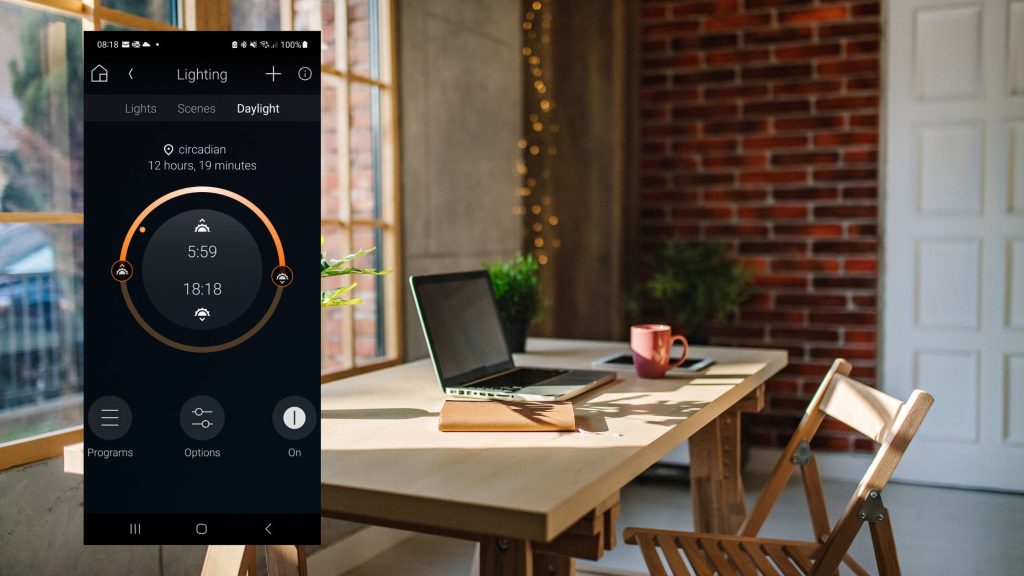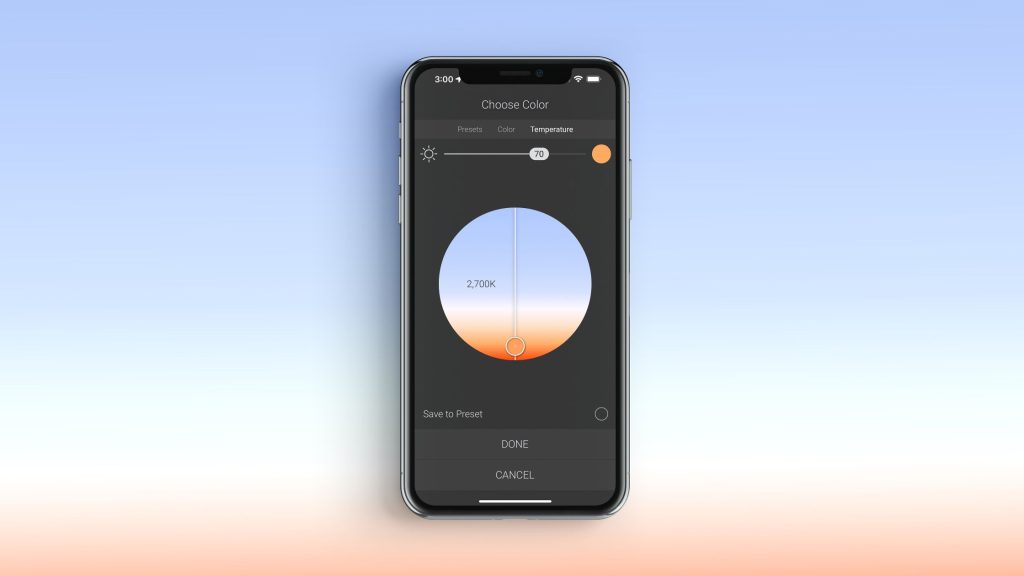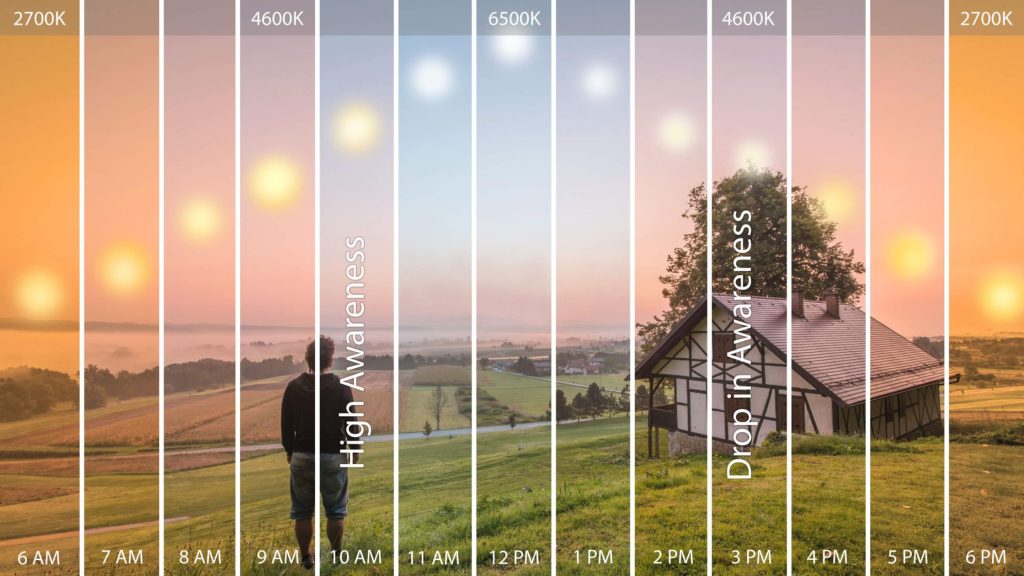How Smart Lighting Can Improve Your Sleep and Overall Well-Being
In today’s world, most of us are constantly connected to technology, often leading to disrupted sleep schedules and unhealthy sleep habits. Our bodies are regulated by a natural 24-hour cycle called the circadian rhythm. This controls our sleep-wake cycle, hormones, and metabolism. However, due to our modern lifestyle, our circadian health can become disrupted. This leads to health issues such as obesity, diabetes, depression, and cardiovascular disease.
One of the ways to maintain a healthy circadian rhythm is by using smart lighting in our homes or offices. Circadian lighting is the concept that electric light is used to support human health by minimizing the effect of electric light on the human circadian rhythm. In this blog post, we will discuss the benefits of smart lighting for circadian health, how it works, and how it can improve our overall health.

What is Smart Lighting?
Smart lighting is a system of light bulbs and fixtures remotely controlled through a smartphone or other connected device. It allows users to adjust the brightness and colour temperature of their lights, set schedules for when the lights turn on and off, and even control them using voice commands.
Smart lighting can be a great addition to any home or business, providing convenience, comfort, and energy efficiency. But it can also have a significant impact on our circadian health, as it allows us to control the light exposure we receive throughout the day and night.

How Does Smart Lighting Impact Circadian Health?
Our bodies have by a master clock located in the brain that controls our sleep-wake cycle, hormone production, and other bodily functions. This master clock is influenced by external cues such as light exposure. Light exposure helps to synchronize our circadian rhythm with the 24-hour day-night cycle.
Exposure to bright light in the morning signals to our brain that it is time to wake up and start the day. Conversely, exposure to warmer light in the evening signals to our brain that it is time to prepare for sleep.
However, our modern lifestyle can disrupt this natural cycle. We spend more time indoors, often in poorly lit environments, and we are exposed to artificial light sources such as smartphones, computers, and TVs. These devices emit blue light that can suppress the production of the sleep hormone melatonin.
Smart lighting can help to restore this natural cycle by allowing us to control the light exposure we receive throughout the day and night. By using warmer, dimmer light in the evening and brighter, cooler light in the morning, we can help to synchronize our circadian rhythm with the 24-hour day-night cycle, leading to improved sleep quality, mood, and overall health.
Control4 smart lighting can easily automate this Circadian rhythm behaviour of tuneable white lights. Your lights will automatically adjust their brightness and colour temperature based on the time of day.
Organizations everywhere – from startups to Fortune 500s – use smart lighting and the WELL Building Standard to prioritize the health and safety of their people. Furthermore, it can maximize real estate value and optimize the human and social capital performance of their businesses.

Benefits of Smart Lighting for Circadian Health:
Improved Sleep Quality: By using smart lighting to adjust the light exposure we receive throughout the day and night, we can improve our sleep quality and duration.
Increased Alertness and Productivity: Bright, cool light can help to increase our alertness and productivity, while warmer, dimmer light can help us wind down and relax. By using smart lighting, we can optimize our energy levels and productivity.
Improved Mood and Mental Health: Light exposure has a significant impact on our mood and mental health. Bright light in the morning can help to reduce feelings of depression and anxiety, while warmer, dimmer light in the evening can help us relax and reduce stress. By using smart lighting to adjust the light exposure we receive, we can improve our mood and mental health.
Energy Efficiency: Smart lighting can be more energy-efficient than traditional lighting, as it allows users to set schedules and adjust the brightness of their lights remotely. Turning off lights that are not in use reduces energy waste and saves money on electricity bills.
Personalized Settings: Smart lighting allows users to customize their light settings based on their individual needs and preferences. Users can adjust the colour temperature, brightness, and schedule of their lights to create a personalized lighting environment that supports their circadian health.

How to Implement Smart Lighting for Circadian Health:
Choose smart light bulbs or fixtures: The first step in implementing smart lighting is to choose the type of smart lighting you want to use. Smart light bulbs are an easy option to install in existing fixtures, while smart light fixtures may require more installation work but offer a more integrated smart lighting solution.
Connect smart lighting to a hub or device: Once you have chosen your smart lighting, you will need to connect it to a hub or device that can control it. Many smart lighting systems use a smartphone app, while Control4 and others may require a separate controller.
Set up schedules and automation: One of the key benefits of smart lighting is the ability to set up schedules and automation. This means you can program your lights to turn on and off at specific times, adjust brightness and colour temperature throughout the day, and even sync your lighting with other devices like curtains, shutters or the thermostat.
Customize your lighting settings: Smart lighting also allows you to customize your lighting settings to support your circadian health. This may include adjusting colour temperature and brightness levels based on the time of day, or setting specific scenes that simulate natural daylight and darkness.

Conclusion:
Smart lighting can be a powerful tool for improving circadian health. By using smart lighting to adjust the light exposure we receive throughout the day and night, we can improve our sleep quality, mood, and overall health. Smart lighting is easy to implement and customize, making it a convenient and effective solution for anyone looking to optimize their circadian health. By making small changes to our lighting environment, we can help to restore our natural circadian rhythm and live healthier, more fulfilling lives.
Interested in learning more about Control4 smart lighting or our other networking and AV products? Simply send us an email today.



0 Comments